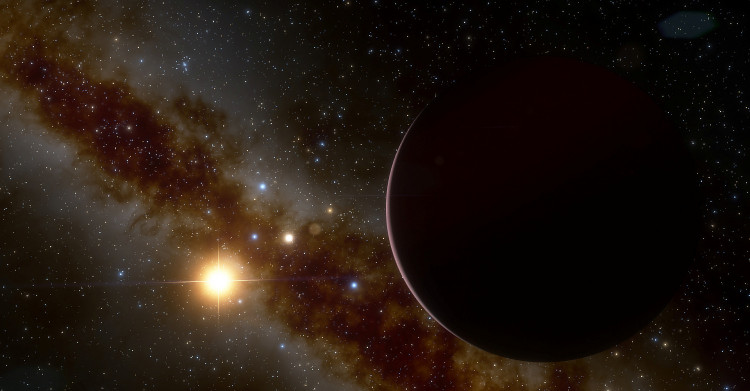Planet WASP-79b is about the size of Jupiter, is super hot and humid, has clouds that rain iron, and skies in a jolly shade of yellow -- and scientists don't know why.
NASA's Hubble Space Telescope and the Magellan II Telescope in Chile analyzed the atmosphere of WASP-79b, which orbits a star that is brighter and hotter than our Sun. It can be found in the constellation Eridanus, which is 780 light-years away from Earth and is one of the most massive exoplanets ever observed.
What makes this planet unique is that it doesn't have any evidence for an atmospheric phenomenon called Rayleigh scattering, or the elastic scattering of light without a change in wavelength. WASP-79b doesn't have this phenomenon, so the sky at daytime would appear yellowish, according to researchers, who have described the spectrum as "weird."
"I've shown the WASP-79b spectrum to a number of colleagues, and their consensus is 'that's weird,' said Kristin Showalter Sotzen of the Johns Hopkins University Applied Physics Laboratory in Laurel, Maryland. "Because this is the first time we've seen this, we're really not sure what the cause is."
Being one of the Hot Jupiters (a class of gas giant exoplanets with characteristics similar to Jupiter but with very short orbital time), WASP-79b travels so close to its star. This makes it's surface extremely hot, with an orbital period of merely 3 1/2 days. However, this unusual exoplanet is in an unusual polar orbit about the star, which goes against scientists' theories about how planets form, especially for hot Jupiters.
The findings are mostly a clue as to how similar planets have evolved over time. Hot Jupiters have different atmospheric conditions -- some have clear skies while others appear cloudy or hazy. If WASP-79b is the same with other hot Jupiters, the strange exoplanet will likely have scattered clouds. It can also lift iron up to high altitudes, which will eventually come back down as rain.
It was also found that water vapor exists in WASP-79b's atmosphere. Because of this finding, it was chosen as an Early Release Science target for NASA's long-delayed James Webb Space Telescope.
The Webb telescope should give scientists more data about WASP-79b. The collected data will provide scientists with insight regarding the planet's chemical makeup and will reveal more evidence of water vapor in its atmosphere.
Scientists are hopeful they will find out more about WASP-79b strange, yellow skies and uncover its underlying source.



